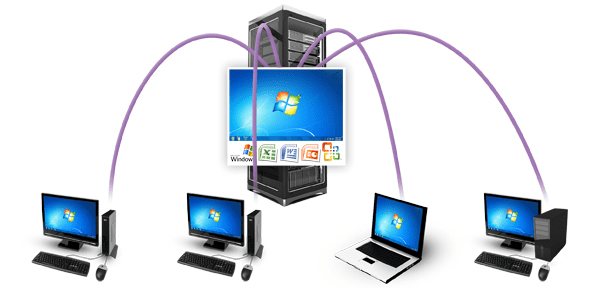Recently Citrix announced that most of their currently-available versions of XenApp – including the much-anticipated XenApp 6.0 – were going to be retired from support by July 2013 at the latest. This Citrix article explains the lifecycle dates.
Essentially this means all customers on XenApp versions prior to 6.5 – including some who I know have just completed upgrades to XenApp 6.0 – now have until 15 July 2013 to upgrade their systems to XenApp 6.5! And let’s ignore the July 2015 EOL date for XenApp 6.5, because as yet there’s no sign of a replacement technology to take us beyond that.
So aside from the fact that this puts lots of Citrix work in the offing (big grin), what does it mean for existing users of the other XenApp platforms? There’s always the option of simply continuing as you are – and to be frank, XenApp 5 on Windows Server 2003 x86 is solid enough to be used long after Citrix and Microsoft stop supporting their respective pieces – but for a lot of people, the prospect of not being able to call on the vendor in times of emergency probably gives them nightmares.
For users of Windows 2003 x86 platforms this deadline will simply accelerate their move towards x64 and bring the hardest part of the migration to the forefront for them – application compatibility. In real terms the Citrix part of the migration isn’t the most difficult because even the largest Citrix users could probably get their admins to recreate all of their apps, policies and farms over a certain period of time (although the possibility of suicide due to mind-numbing boredom is possibly greatly increased). Citrix provide the Migration Center Utility for those who need some help migrating their farm, although bear in mind this is designed for parallel migrations, building the systems alongside each other and using the Web Interface to aggregate them together. However, the big hurdle is making sure that all of your user applications will function under x64. OS compatibility, 32-bit vs 64-bit vendor support, changes to Windows Firewall, UAC, DEP, ASLR, UIOConsole Detection, service privilege architectures – all these differences between the x86 and x64 platforms add up to a veritable hornets’ nest of possible problems with applications. If you find yourself low on the time and/or resources to perform proper application discovery and placement, then tools like Citrix’s AppDNA or Quest’s ChangeBase can help you immensely – whilst not perfect, they will certainly be of great value in avoiding some possible pitfalls.
The other big issue for people moving off Windows 2003-based XenApp 5 systems will be around user profiles. The user profile architecture changed from 2003/XP to Vista/2008 and migrating existing user profiles may provide some issues. However, AppSense can provide some mitigation towards this – being as it is currently the only software solution that can provide a unified user profile experience across both old and new profile types.
Those that deployed XenApp 5 on Windows Server 2008 may have a few less of the compatibility and profile issues, however as they are moving from what is, in my opinion, a substantially inferior platform to XenApp 5 on Windows Server 2003, they won’t be as resistant to the upgrade, as XenApp 6.5 may actually provide quite a bit of improvement to them. Having already made the move to 2008, the OS and profile issues will already have been dealt with, and you’ll only have the x86-x64 issue if you deployed the 32-bit version. The migration strategy to XenApp 6.5 should be much the same as that from PS4.5/XA5 for 2003.
The users who are already on XenApp 6.0 should have already done the application compatibility bit (although I know several clients maintaining legacy XenApp 5 farms alongside them for the apps that won’t work on x64 who may now be cursing just a little bit). However, as you can’t mix XenApp 6.0 and 6.5 farms there’s still a bit of work to be done even if all of your apps are running perfectly. You could aggregate farms through the Web Interface and move your apps manually, use the Migration Center Utility mentioned above, or utilize the XenApp 6.0 to 6.5 Upgrade Utility. It’s not strictly what it claims – rather it automates an uninstall of 6.0 and an install of 6.5. You’d still need to migrate your farm resources – it just negates the need to reinstall your apps on existing server builds.
The only other gotcha that I can think of around this is for those poor sods out there that still use Lotus Notes. So far, Notes is only supported on XenApp 6.0, and if I know Notes at all, support is one thing you’ll need. There’s also the thought that with everything landing on x64, that 16-bit apps will now no longer be able to run at all. I don’t know any personally, but I’d be willing to bet there’s a few companies out there with some sort of dependency on a 16-bit app. There’s also the huge cost of upgrading thousands – or hundreds of thousands – of software instances that won’t run on x64 platforms. For some companies, the huge dollar value of this upgrade path alone may force some of them along different routes – possibly expanding their VDI implementations, or even switching them to Citrix’s VM Hosted Apps. And for a lot of overstretched project teams already battling to cover their bases in an upgrade to XenApp 6.0 – I can understand that this deadline really isn’t helping them at all.


